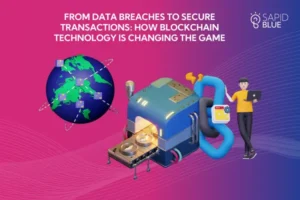The transition from a centralised Web 2.0 framework to the decentralised paradigms of Web 3.0 represents a pivotal shift in how we perceive and interact with technology. This shift, spearheaded by blockchain technology, is redefining the foundational principles of enterprise business models, challenging the longstanding notions of trust, authority, and reliability that have traditionally been the bastions of these organisations. The expected global blockchain technology market size is projected to reach $163 billion by 2027, illustrating its growing acceptance across industries driven by its ability to enhance security, transparency, and efficiency in various processes. However, organisations face challenges in adopting blockchain technology, such as lack of knowledge, workforce availability, and governance issues, with only 29% of organisations piloting blockchain or having fully deployed it, indicating a need for broader adoption. Blockchain technology impacts business models and fosters innovation, with a taxonomy of blockchain business models showcasing new value propositions and business model innovations. The five archetypal business model patterns derived from the cluster analysis of 99 firms using blockchain technology further illustrate the potential of this technology to transform enterprise business models.
1. People’s Perspective
For decades, our reliance on centralised entities – be it financial institutions, tech conglomerates, or media corporations – was underpinned by an implicit trust in their capacity to act as central authorities. These institutions have been the custodians of not just our data, but also our trust, often seen as beacons of reliability in the transaction of goods, services, and information. In this Web 2.0 world, the centralised model was synonymous with control, security, and dependability.
However, as we pivot to the Web 3.0 era, underscored by the principles of decentralisation, the underpinnings of this trust are being recalibrated. Blockchain, at its core, challenges the need for traditional centralised institutions, proposing instead a model where trust is not placed in a single entity, but distributed across a network of participants. This shift from a centralised to a decentralised model of trust is not just technological; it’s profoundly societal, impacting how people perceive and place their trust.

a) Decentralisation, Trust, & Authority
The arrival of blockchain technology changes how trust works. Instead of relying on a central authority, like a bank or a government, blockchain uses clever math and agreement among users to keep things secure. This means everyone can trust the system without needing to trust any one person or company. It also makes things more open and safe because there’s no single point that can mess things up or be hacked. Businesses now have to rethink their role. They used to be the ones everyone trusted, but now people are asking if they’re really necessary. Blockchain offers a different way. It cuts out the middlemen and the risks that come with them, like leaks of private information or misuse of power.
b) The Challenge for Enterprises
The challenge for enterprises in the Web 3.0 world is twofold. Firstly, they must navigate the shift from being the sole custodians of trust to being participants in a broader ecosystem where trust is dispersed. This requires a fundamental reevaluation of business models, as the value proposition of being a trusted intermediary is eroded.
Secondly, enterprises must adapt to the technological complexities and cultural shifts inherent in adopting blockchain technologies. This includes understanding the implications of smart contracts, the nuances of decentralised finance (DeFi), and the societal move towards valuing transparency and inclusivity over centralised control.
2. Role of Enterprises in Web 3.0 World
In the rapidly evolving digital landscape, enterprises stand at a pivotal crossroad, especially with the advent of Web 3.0 technologies. This new era, heralded by the integration of blockchain, demands a strategic reassessment of traditional business models. Enterprises can choose to ignore, extinguish, or embrace these innovations. Drawing inspiration from the historical approach of “Embrace, Extend, and Extinguish,” popularised in the tech industry, it’s clear that the most forward-thinking strategy for enterprises is not just to embrace but to integrate and innovate within this paradigm shift. This approach not only ensures survival but also secures a competitive advantage in the Web 3.0 world.
a) Understanding this Fundamentally Transformative Technology
The first crucial step for enterprises is to deeply understand blockchain technology and its implications for their existing business models. Blockchain, at its core, is a decentralised ledger that ensures transparency, security, and integrity of data without the need for centralised authority. This technology underpins cryptocurrencies like Bitcoin but its potential extends far beyond, into supply chain management, finance, healthcare, and more.
For enterprises, this means reevaluating how they approach data security, transparency, and customer trust. Blockchain’s ability to offer secure, traceable transactions and its resistance to fraud can significantly elevate an enterprise’s value proposition. However, this requires a foundational shift in understanding from viewing blockchain as a mere tool for financial transactions to recognizing its potential in creating value through transparency and security in all aspects of business operations.
b) Finding True Use-Cases of Blockchain
The second step is identifying genuine use-cases where blockchain technology can be leveraged within the enterprise to solve existing problems or create new value. This is not about jumping on the blockchain bandwagon for the sake of trendiness but about critically analysing where this technology can offer tangible benefits. Whether it’s streamlining supply chain management, ensuring the authenticity of products, or enabling smart contracts for more efficient business processes, the applications are vast and varied.
However, finding the right use-case requires a deep understanding of both the technology and the specific challenges and opportunities within the enterprise’s industry. It’s about finding the intersection where technology meets business needs in a way that enhances efficiency, trust, and transparency.
c) The Balancing Act of Web 2.0 & Web 3.0
In the digital evolution from Web 2.0 to Web 3.0, enterprises face the imperative challenge of transitioning from centralised, data-driven models to embracing the decentralisation and transparency heralded by blockchain technology. This shift requires a delicate balancing act of retaining the interactive, user-centric ethos of Web 2.0 while integrating the security, transparency, and user empowerment of Web 3.0. Enterprises must navigate this new landscape by embracing blockchain for enhanced trust and transparency, developing hybrid models that blend the best of both worlds, innovating in customer engagement through tokenization and NFTs, and prioritising user privacy and data security. As partners in a shared, decentralised ecosystem, their role evolves from data custodians to facilitators of a user-controlled data environment. By understanding and adapting to this shift, enterprises can leverage blockchain to foster more transparent, secure, and customer-centric business models, achieving a harmonious blend of the old and new paradigms for sustainable, innovative business practices.
Enterprises are incessantly on the lookout for innovations that can significantly enhance operational efficiency, security, and transparency. Blockchain technology, often only associated with cryptocurrencies and digital art like NFTs (Non-Fungible Tokens), holds the potential to revolutionise various sectors by offering solutions that extend far beyond its most well-known applications. This piece explores the fundamental use cases of blockchain in digital solutions, emphasising how this groundbreaking technology is challenging and transforming enterprise business models.
3. Fundamental Use-Cases: Blockchain In Digital Solutions
a) Immutable Traceability
One of the most compelling attributes of blockchain technology is its ability to provide immutable traceability. This feature ensures that once a piece of data is recorded on a blockchain, it cannot be altered or deleted, making it exceptionally secure and trustworthy. This is particularly advantageous in scenarios where security, logging, and auditing are paramount. Traditional log files for audit trails, while useful, are susceptible to tampering and security breaches. Blockchain, by contrast, offers a much more robust solution.
In industries where integrity control systems are crucial for regulatory compliance, blockchain can play a transformative role. For instance, in the FinTech sector, immutable traceability can help combat fraud and ensure transparent transactions. Similarly, the supply chain industry can benefit from blockchain by enabling a transparent and tamper-proof record of product journeys, from manufacture to delivery. Real estate and gambling industries also stand to gain from enhanced security and verifiable audit trails provided by blockchain technology.
b) Operator & Asset Separation
Blockchain introduces a novel concept in digital interactions: the separation of operators and assets. Traditional systems often require users to log in with their identity, with assets effectively being under the operator’s control. Blockchain technology challenges this by ensuring that assets remain with their owner, not just with the operator. This shift has significant implications for various industries.
In gaming, for example, blockchain allows players to truly own in-game assets, which can be securely and transparently transferred or sold. The healthcare and pharmaceutical sectors also benefit, as blockchain enables secure and patient-centric management of health records and pharmaceutical assets, ensuring privacy and reducing the risk of counterfeit drugs.
c) First Mile of Trust
Despite its many advantages, blockchain technology still requires a “First Mile of Trust” from a centralised body. This necessity arises from the need for authenticated first entry – ensuring that the initial data or asset entering the blockchain is legitimate and trustworthy. This is particularly relevant in financial services, real estate, and healthcare, where the authenticity of assets or information is critical.
The role of a custodian becomes indispensable in these scenarios, acting as the trusted party that verifies the underlying assets before they are digitised and entered onto the blockchain. This foundational layer of trust ensures that the subsequent benefits of blockchain technology – such as transparency, security, and immutability – are built on solid ground.
d) Programmable Assets
Blockchain technology also introduces the concept of programmable assets through smart contracts. Unlike traditional agreements that require manual intervention and are prone to human error and delays, smart contracts automatically execute transactions or actions once predetermined conditions are met. This automation can significantly reduce overheads, enhance efficiency, and ensure the integrity of transactions.
The financial services and real estate sectors, in particular, can leverage programmable assets to streamline operations. From automating insurance payouts to executing real estate transactions without the need for intermediaries, smart contracts offer a more efficient and secure way to manage assets.
4. Implementation Challenges Blockchain In Digital Solutions
The blockchain revolution promises to redefine the operational paradigms of enterprise business models. As organisations navigate through the labyrinth of digital transformation, the adoption of blockchain technologies presents both unprecedented opportunities and formidable challenges. Below, we explore the multifaceted hurdles that enterprises face in integrating blockchain into their digital solutions, focusing on mindset, technological barriers, and business considerations.
a) Mindset
- Centralised Mindsets of Businesses: A significant hurdle in adopting blockchain technology is the prevailing centralised mindset within many enterprises. Traditional business models are structured around central points of control and authority, making it challenging to transition to blockchain’s decentralised nature. This shift not only requires a change in technological infrastructure but also a cultural transformation within the organisation, embracing decentralisation as a new norm.
- Thinking Beyond Crypto: Blockchain technology is often synonymously associated with cryptocurrencies, but its potential applications extend far beyond. A critical challenge for businesses is to broaden their perspective and explore the myriad ways blockchain can enhance transparency, security, and efficiency across various operations. Moving beyond the crypto-centric view to harness blockchain for supply chain management, digital identity verification, and more, requires a paradigm shift in thinking.
b) Tech
- Many Chains & Wallets – Interoperability: The blockchain ecosystem is fragmented with numerous chains and wallets, each operating on different protocols. This lack of interoperability poses a significant challenge for enterprises looking to integrate blockchain solutions. Ensuring seamless communication and transaction across various blockchain networks is essential for the widespread adoption of this technology in digital solutions. Overcoming this hurdle necessitates innovative approaches to foster interoperability without compromising the security and integrity of transactions.
- Balancing between Web2 & Web3: The transition from Web2 to Web3 is marked by the evolution from centralised to decentralised online platforms. For enterprises, finding the right balance between leveraging the maturity and stability of Web2 technologies and embracing the decentralised, transparent, and user-empowering aspects of Web3 is a challenge. This balancing act involves navigating compatibility issues, ensuring user-friendly interfaces, and maintaining robust security measures.
c) Business
- Future Regulations – Uncertainty: The regulatory landscape for blockchain and cryptocurrency is still in its infancy and marked by significant uncertainty. Enterprises venturing into blockchain must navigate a complex and evolving regulatory framework, which varies significantly across different jurisdictions. This regulatory ambiguity can deter investment in blockchain initiatives due to concerns over compliance and potential legal challenges.
- Infra & Execution – Energy & Cost: Blockchain, especially proof-of-work-based systems, is often criticised for its high energy consumption and environmental impact. Enterprises aiming to implement blockchain solutions must consider the infrastructure and execution costs, including energy consumption and the associated carbon footprint. Additionally, the initial investment in blockchain technology can be substantial, with costs related to hardware, software, and skilled personnel. Balancing the benefits of blockchain with these costs and environmental considerations is a critical challenge for businesses.
5. What’s Required for Blockchain in Digital Solutions
In an era defined by rapid technological advancement and the inevitable quest for digital transformation, blockchain emerges as a beacon of innovation with the potential to redefine the paradigms of enterprise business models. However, harnessing its full potential requires more than just enthusiasm for its revolutionary capabilities. Businesses looking to integrate blockchain into their digital solutions must navigate through a preparatory phase, adopt a proactive mindset, and strategize for expedited market entry. Let’s delve into what’s truly required for blockchain in digital solutions.

a) Getting Ready for Adoption
The first step towards blockchain integration is creating a fertile ground for its adoption. This preparation involves several key aspects:
- Understanding Blockchain: Before any practical application, it’s crucial for decision-makers and IT teams to have a comprehensive understanding of blockchain technology — its advantages, limitations, and potential applications within their specific industry.
- Infrastructure Readiness: Blockchain applications often demand robust infrastructure for optimal performance. This includes evaluating and possibly upgrading existing IT infrastructure to ensure compatibility with blockchain operations.
- Regulatory Compliance: Given the decentralised nature of blockchain, regulatory compliance becomes a significant consideration. Businesses must navigate the complex landscape of local and international regulations governing data security, privacy, and blockchain transactions.
- Cultural Shift: Embracing blockchain requires a shift in organisational culture towards innovation, openness, and a willingness to experiment. Cultivating an environment that encourages experimentation and accepts the iterative failures leading to success is vital.
b) Shifting-Left in Approach
A ‘shift-left’ approach in blockchain adoption refers to integrating blockchain considerations early in the project development life cycle, rather than as an afterthought. This proactive strategy involves:
- Early Engagement: Engaging with blockchain technology and potential partners at the initial stages of project conceptualization allows for more seamless integration and innovation.
- Security by Design: Given the immutable nature of blockchain, security and privacy must be paramount from the outset. A shift-left approach ensures these considerations are embedded in the design phase, minimising vulnerabilities.
- Iterative Development: Adopting an agile methodology for blockchain projects facilitates continuous improvement and adaptability to change. This approach allows for the iterative testing of blockchain functionalities and integration with existing systems.
c) Expedite Go-To-Market
In the competitive landscape of digital solutions, speed to market is a critical success factor. Blockchain projects, with their complexity, require a strategic approach to expedite their go-to-market:
- Partnerships and Collaborations: Forming alliances with blockchain experts, industry consortia, and technology partners can accelerate development and provide access to specialised skills and insights.
- Leveraging Blockchain Platforms: Utilising existing blockchain platforms and services can significantly reduce development time and cost, compared to building solutions from scratch. This approach allows businesses to focus on creating value-added services rather than the underlying technology.
- Minimum Viable Product (MVP) Strategy: Adopting an MVP approach enables businesses to launch a product with enough features to satisfy early customers and provide feedback for future product development. This strategy not only accelerates time to market but also helps in understanding the market’s reception to blockchain features

Conclusion
As we step into the era of Web 3.0 powered by blockchain technology, enterprises face both exciting opportunities and significant challenges. The shift from centralised to decentralised trust models is reshaping how businesses operate, requiring a rethink of traditional approaches.
Blockchain offers solutions to long-standing problems across various sectors, from finance to healthcare to supply chain management. However, embracing blockchain comes with hurdles such as mindset shifts, technological complexities, and evolving regulations.
To succeed in this new landscape, businesses must adopt a proactive mindset, integrate blockchain early in project development, and expedite go-to-market strategies. Collaboration, innovation, and adaptability are key.
By forging partnerships, leveraging existing blockchain platforms, and embracing iterative development, enterprises can thrive in the Web 3.0 era. Blockchain can help redefine value propositions, enhance transparency, and create more inclusive and customer-centric business models.
In this journey toward a decentralised future, businesses have the chance to lead the way, driving innovation and shaping the digital landscape for generations to come.
FAQs
1. What is Web 3.0 and how does it impact enterprise business models?
Web 3.0 represents a shift from centralized to decentralized paradigms, facilitated by technologies like blockchain. This transition challenges traditional notions of trust and authority in business models. Enterprises must adapt to this decentralized landscape, reevaluating their roles as custodians of trust and participants in broader ecosystems.
2. What is the role of blockchain technology in transforming enterprise business models?
Blockchain technology fundamentally alters how trust operates by eliminating the need for centralized authorities. Instead, trust is distributed across a network of participants, enhancing security, transparency, and efficiency. Enterprises must navigate challenges like technological complexity and cultural shifts to leverage blockchain’s potential in creating value through transparency and security.
3. What are some key use-cases of blockchain in digital solutions for enterprises?
Blockchain offers several compelling use-cases, including immutable traceability, operator and asset separation, establishing the “First Mile of Trust,” and programmable assets through smart contracts. These applications span industries like finance, supply chain management, healthcare, gaming, and more, revolutionizing operational paradigms and enhancing security and efficiency.
4. What are the implementation challenges enterprises face in adopting blockchain technology?
Enterprises encounter hurdles such as centralised mindsets, technological barriers like interoperability and energy consumption, and regulatory uncertainties. Shifting organizational culture, broadening perspectives beyond cryptocurrencies, and navigating regulatory landscapes are critical in overcoming these challenges and successfully integrating blockchain into digital solutions.
5. What preparations are necessary for enterprises to adopt blockchain in digital solutions?
Preparing for blockchain adoption involves understanding the technology, ensuring infrastructure readiness, navigating regulatory compliance, and fostering a culture of innovation. A proactive “shift-left” approach, integrating blockchain considerations early in project development, and expediting go-to-market strategies through partnerships, leveraging platforms, and MVP strategies are also essential steps.






